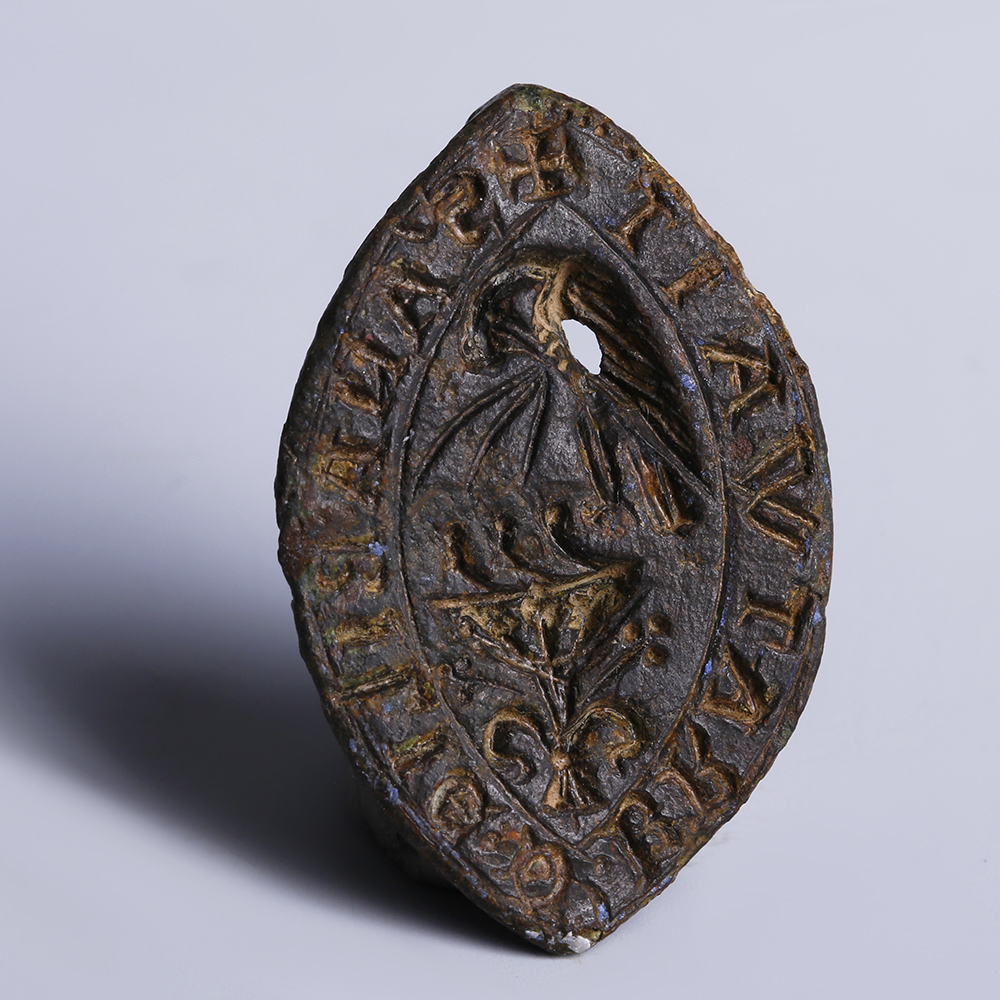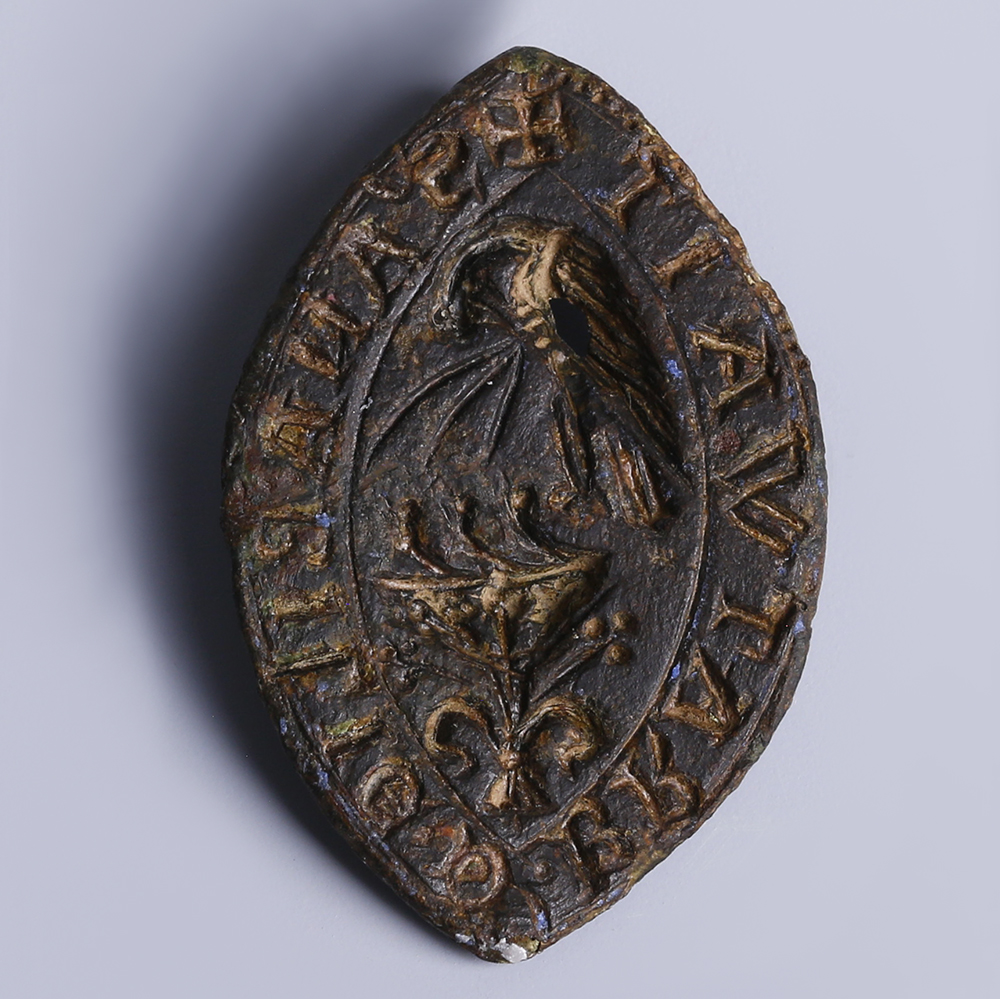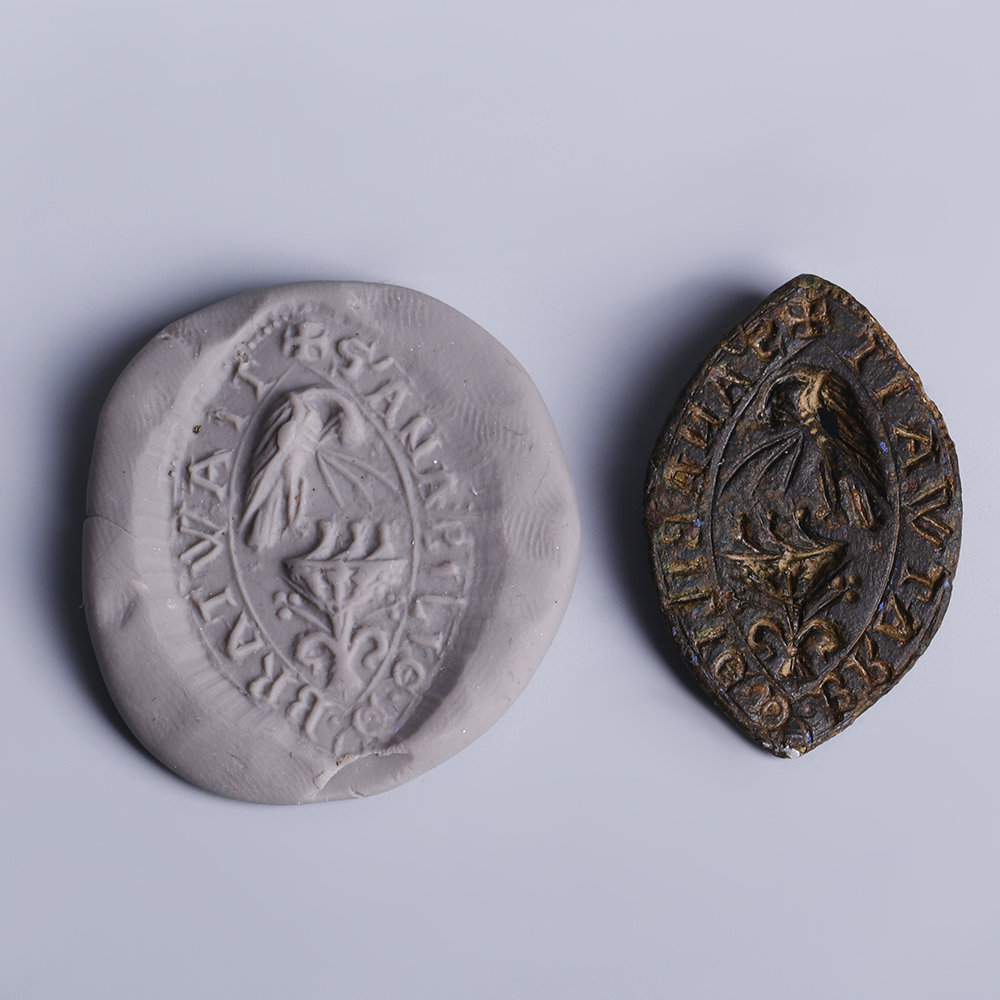During the Medieval period, seals were widely used in trading to ensure the authenticity and security of a document or letter. Bronze and copper seals were a possession of the wealthy or of those in authority, since they cost more to produce than lead seals, and had a longer life span on account of the metal’s hardness. The social status of the owner was reflected in the size of the seal, with the combination of motif and text providing further insight into the owner’s identity, such as their place in a family. An intaglio made in relief is the most traditional form of dry seal used to make the impression on the paper. The common design of a seal comprises a graphic emblem in the middle surrounded by a text, which is called the legend, around the perimeter.
The engraved image depicts a female pelican, shown in the popular Christian motif known as ‘a pelican in her piety’. Such decorative iconography finds its origin in the Bible and was then developed by Christian commentators. In nature, female pelicans keep the food for their young to macerate in the membranous sac that hangs from the lower jaw, and then nourish them by pressing their beak against their chest to let the food out. To the naked eye this was perceived as the pelican piercing her breasts in order to draw blood which would have fed her chicks. This image became the symbol of Christ who sheds blood for the redemption of men. The inscription, reading S’ANABILIE, a girl’s name, popular from the mid 12th century onwards, and BRATWAIT, a habitational name from any of the places in northern England named Braithwaite, from the Old Norse breior ‘broad’ + pveit ‘clearing’.


